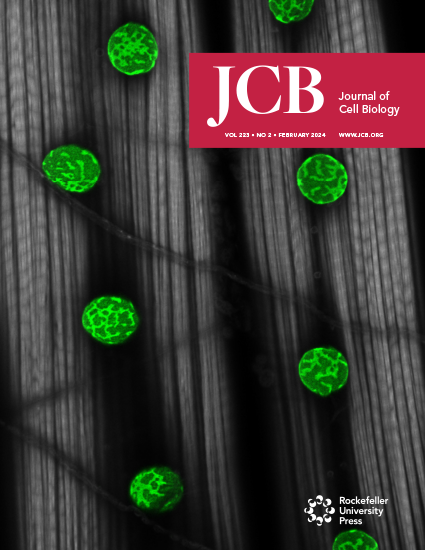Lysosomal TPC2 channels disrupt Ca2+ entry and dopaminergic function in models of LRRK2-Parkinson's disease.
IF 7.4
1区 生物学
Q1 CELL BIOLOGY
引用次数: 0
Abstract
Parkinson's disease results from degeneration of dopaminergic neurons in the midbrain, but the underlying mechanisms are unclear. Here, we identify novel crosstalk between depolarization-induced entry of Ca2+ and lysosomal cation release in maintaining dopaminergic neuronal function. The common disease-causing G2019S mutation in LRRK2 selectively exaggerated Ca2+ entry in vitro. Chemical and molecular strategies inhibiting the lysosomal ion channel TPC2 reversed this. Using Drosophila, which lack TPCs, we show that the expression of human TPC2 phenocopied LRRK2 G2019S in perturbing dopaminergic-dependent vision and movement in vivo. Mechanistically, dysfunction required an intact pore, correct subcellular targeting and Rab interactivity of TPC2. Reducing Ca2+ permeability with a novel biased TPC2 agonist corrected deviant Ca2+ entry and behavioral defects. Thus, both inhibition and select activation of TPC2 are beneficial. Functional coupling between lysosomal cation release and Ca2+ influx emerges as a potential druggable node in Parkinson's disease.lrrk2 -帕金森病模型中溶酶体TPC2通道破坏Ca2+进入和多巴胺能功能。
帕金森病是由中脑多巴胺能神经元的退化引起的,但其潜在的机制尚不清楚。在这里,我们发现了在去极化诱导的Ca2+进入和溶酶体释放之间的新的串扰,以维持多巴胺能神经元的功能。在体外,LRRK2中常见的致病基因G2019S突变选择性地夸大了Ca2+的进入。抑制溶酶体离子通道TPC2的化学和分子策略逆转了这一点。在缺乏TPCs的果蝇中,我们发现人类TPC2表型LRRK2 G2019S的表达在体内干扰多巴胺能依赖性的视觉和运动。在机制上,功能障碍需要完整的孔,正确的亚细胞靶向和TPC2的Rab相互作用。降低Ca2+通透性与一种新的偏压TPC2激动剂纠正偏差的Ca2+进入和行为缺陷。因此,抑制和选择性激活TPC2都是有益的。溶酶体阳离子释放和Ca2+内流之间的功能偶联成为帕金森病的潜在可用药节点。
本文章由计算机程序翻译,如有差异,请以英文原文为准。
求助全文
约1分钟内获得全文
求助全文
来源期刊

Journal of Cell Biology
生物-细胞生物学
CiteScore
12.60
自引率
2.60%
发文量
213
审稿时长
1 months
期刊介绍:
The Journal of Cell Biology (JCB) is a comprehensive journal dedicated to publishing original discoveries across all realms of cell biology. We invite papers presenting novel cellular or molecular advancements in various domains of basic cell biology, along with applied cell biology research in diverse systems such as immunology, neurobiology, metabolism, virology, developmental biology, and plant biology. We enthusiastically welcome submissions showcasing significant findings of interest to cell biologists, irrespective of the experimental approach.
 求助内容:
求助内容: 应助结果提醒方式:
应助结果提醒方式:


